Here is a complete list of free places in Mumbai that you can enjoy without spending a dime.
1: Visit Gateway of India
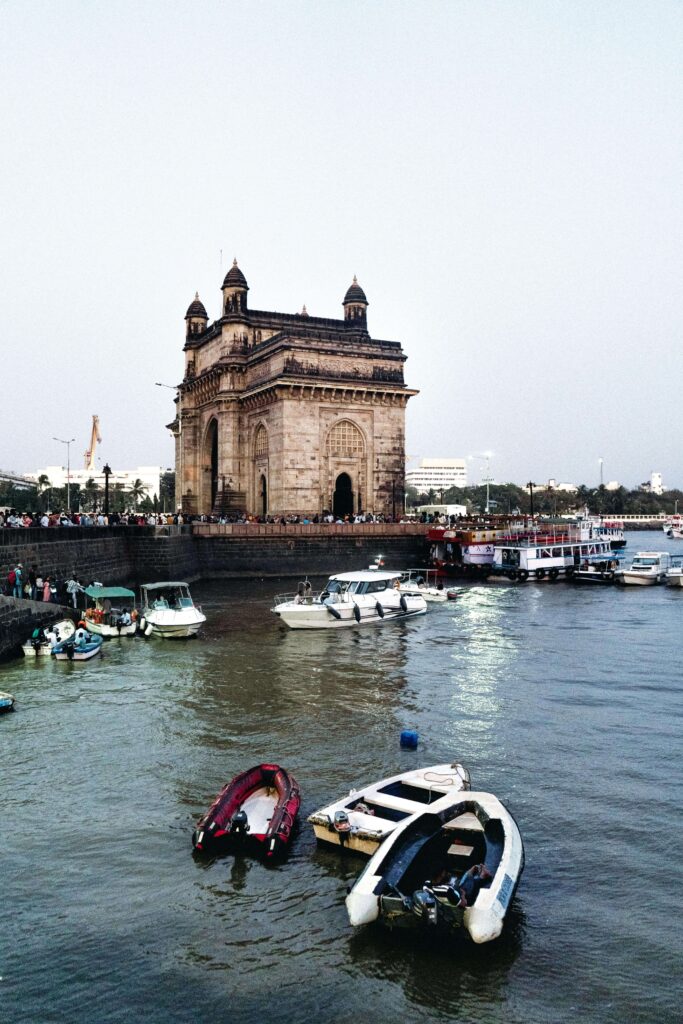
The Gateway of India is an iconic arch monument that stands majestically by the waterfront. Built during the British Raj, it serves as a historical landmark and a perfect spot for photographs against the backdrop of the Arabian Sea. You can read and get to know everything about the Gateway of India here.
2: Sample the shops in Colaba Causeway
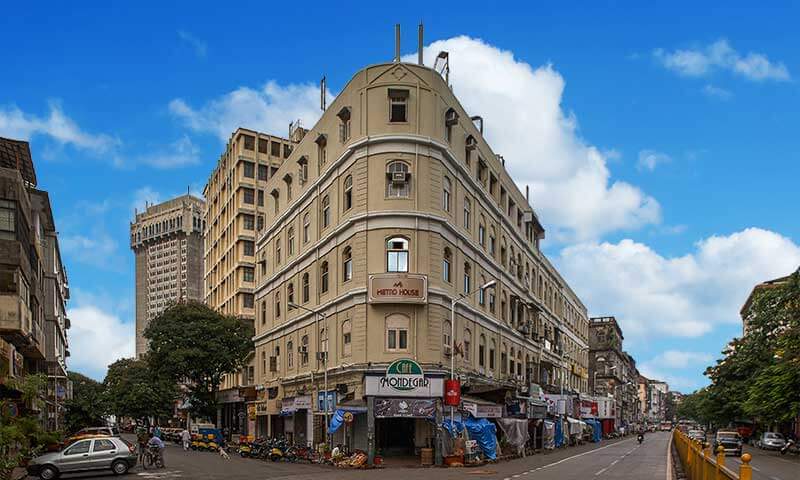
It is an area full of shopping, eateries, pubs, entertainment and heritage buildings. You can start your trip from the Gateway of India and then move up north to the Regal Cinema Theatre to complete the walking tour. On your way, you can stop and marvel at the heritage architecture and how things change (deteriorated or modernized) over some time.
India has so much history to offer to the world. All it needs is a passion for restoration and storytelling. Colaba Causeway is a case in point.
3: Take a walk in the Fort Area
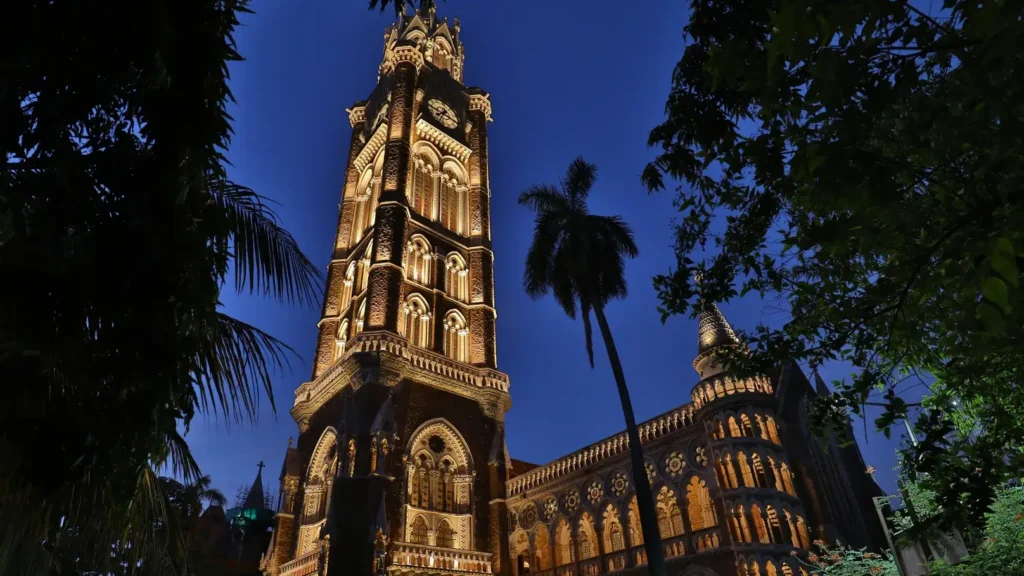

The Fort area of South Mumbai is a historic and vibrant district, which is rich in colonial-era architecture and landmarks. This precinct was the heart of British Bombay and has retained its charm through its buildings, narrow lanes, and bustling markets like Crawford Market & Kala Ghoda, where tourists can explore a blend of history, shopping, and local culture.
Key attractions in the Fort area include:
- The Rajabai Clock Tower: An iconic structure, located within the University of Mumbai campus, this tower resembles London’s Big Ben and is a must-see for visitors interested in British-era architecture.
- The Bombay High Court: A prominent Gothic-style building, it stands as one of the oldest high courts in India.
- Chhatrapati Shivaji Maharaj Vastu Sangrahalaya (formerly the Prince of Wales Museum): This museum showcases rich collections of art, archaeology, and natural history, housed in a stunning heritage building.
Several organizations offer free walking tours of the historic Fort area. These tours help you uncover the history and colonial architecture of Mumbai’s heart, with knowledgeable guides who give you a deeper understanding of the city.
4: Read at The Asiatic Library
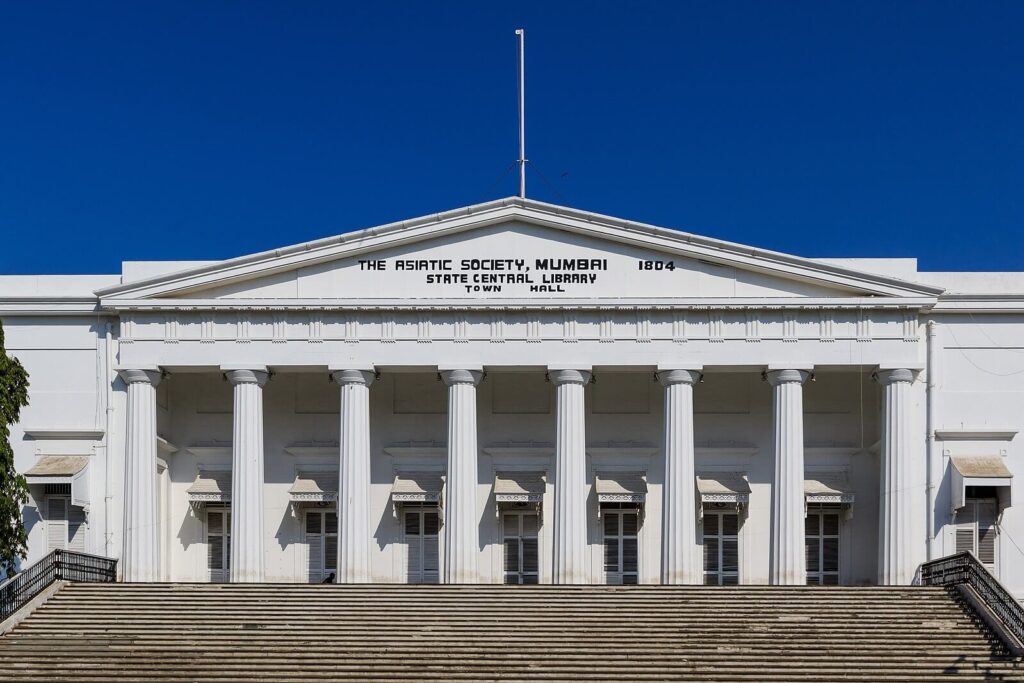
Established in 1804, is a significant institution for Asian studies. It houses over 350,000 books, including rare manuscripts like Dante’s Divine Comedy. The library is open to the public, offering a wealth of knowledge for researchers and history enthusiasts. Entry is free for members, while non-members may need to acquire permission. For the permision and further enquiry, please contact the Asiatic Society directly. The Asiatic Library holds great cultural significance, preserving India’s intellectual heritage and fostering research.
Location: Fort
Timing: Monday to Saturday, from 0930 to 1830, though visitors should confirm with the library directly for any update
5: Walk Through Kala Ghoda
Kala Ghoda (meaning Black Horse) is a vibrant cultural district in Mumbai, known for its historic charm and artistic flair. The area is famous for the annual Kala Ghoda Arts Festival, a nine-day celebration of creativity held every February, showcasing visual arts, music, dance, theatre, literature, and street performances. Beyond the festival, Kala Ghoda is home to heritage buildings, galleries, boutiques, and cafes, making it a hub for art lovers and history enthusiasts. The area preserves Mumbai’s colonial legacy while embracing modern creativity, making it a must-visit for those exploring the city’s cultural scene. Strolling through this artistic neighbourhood allows tourists to soak in Mumbai’s creative vibe without spending anything.
6: Marvel at the Chatrapati Shivaji Maharaj Terminus

Chhatrapati Shivaji Terminus (CST) is a UNESCO World Heritage site and an architectural masterpiece, blending Victorian Gothic and Indian styles and amongst the best free places in Mumbai to visit and learn about. Built in 1887 as Victoria Terminus, it commemorates Mumbai’s colonial past. The station’s intricate design, featuring domes, arches, and carvings, makes it a must-see for visitors to the city.
You can read more about it here: Everything You Need to Know about Chhatrapati Shivaji Maharaj Terminus: A Complete Guide for the Tourists
Location: Fort
Timing: It is open 24/7
7: Pray at St. Thomas Cathedral
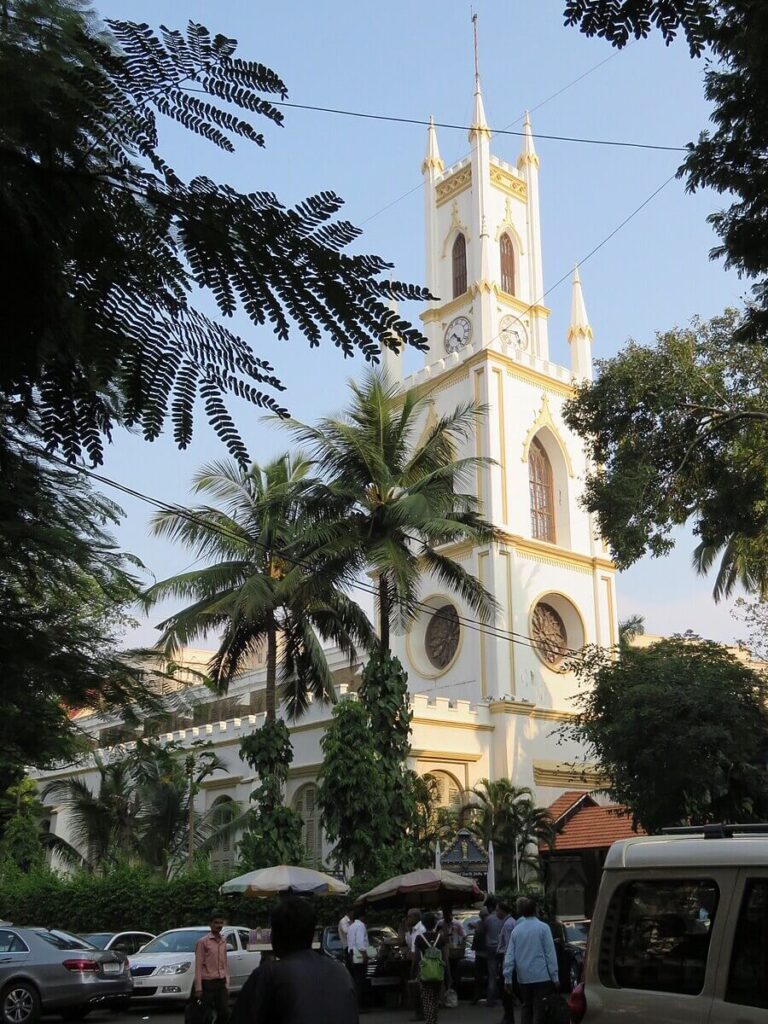
The Catherdal is a historical and architectural gem that holds great significance in the city’s colonial past. Built in 1718, it is the oldest Anglican church in Mumbai and one of the first churches in Bombay Fort. This beautiful church, constructed in the early English Gothic style, is an example of the British influence in colonial India.
The cathedral is named after St. Thomas the Apostle, believed to have brought Christianity to India. Its stained glass windows depicting Saint Thomas, Saint Gabriel, and Saint Michael, and intricate carvings are a testament to its historical and religious significance. The church also features a grand marble altar and several memorials dedicated to prominent figures from Mumbai’s colonial era.
For tourists, St. Thomas Cathedral offers a peaceful retreat from the bustling city life, with its tranquil surroundings making it ideal for contemplation and appreciation of its heritage.
Location: Colaba, South Mumbai
Timing: 7 AM–6 PM Monday through Saturday, 7 AM–8:30 PM on Sunday
8: Enjoy the Jehangir Art Gallery
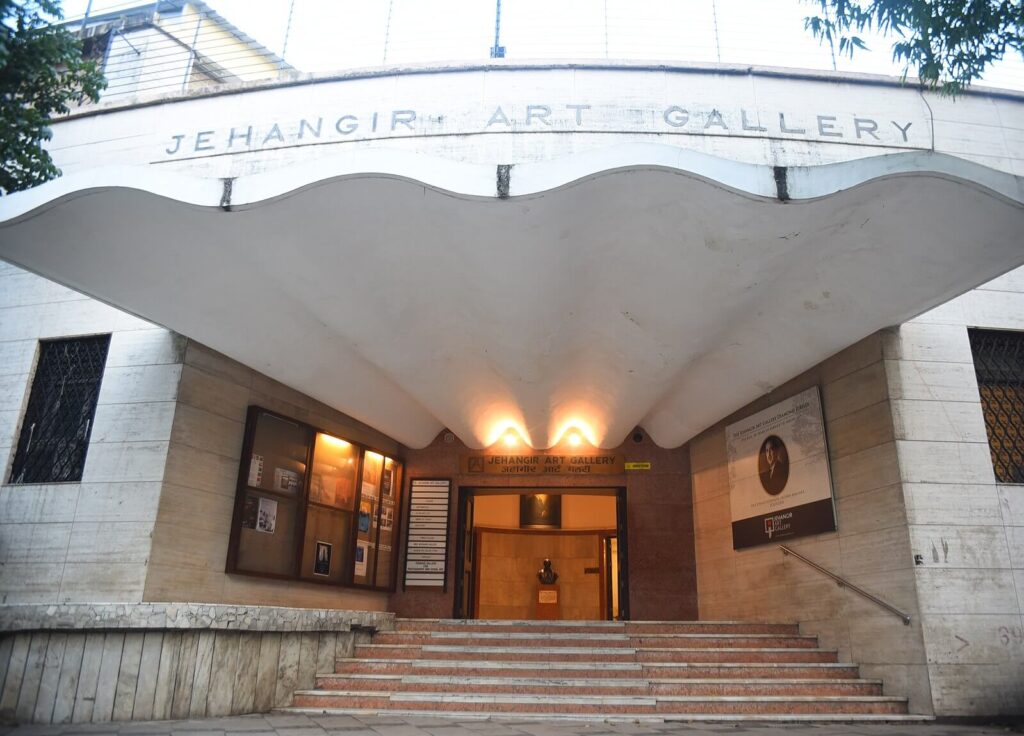
Jehangir Art Gallery is one of the most renowned art galleries in India, known for promoting contemporary Indian art. Opened in 1952, it has become a hub for artists and art enthusiasts, featuring a variety of exhibitions ranging from paintings to sculptures by both established and emerging artists. The gallery plays a significant role in Mumbai’s cultural scene and offers visitors a chance to experience the diversity of Indian art. Entrance to the gallery is typically free of charge, although some special exhibitions may have a nominal entry fee. It’s amoingst the best free places in Mumbai for art lovers to immerse themselves in the creative spirit of Mumbai.
To know more about the latest exhibitions, you can visit Jehangir Art Gallery.
Location: Kala Ghoda, Fort, South Mumbai
Hours: Daily from 11 AM to 7 PM
9: Play at the Oval Maidan
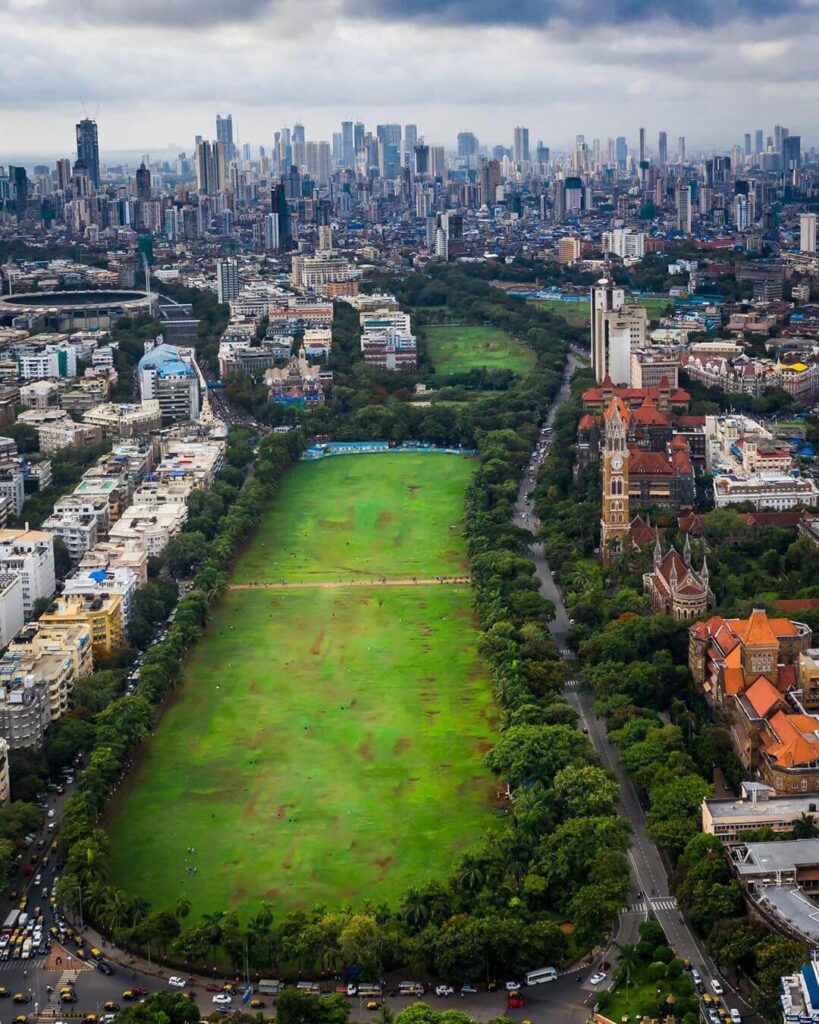
It is a lush, green open space in the heart of Mumbai, nestled between the bustling areas of Churchgate, Nariman Point, and Kala Ghoda. This iconic ground is a popular spot for sports enthusiasts, especially cricket lovers, who often gather here to watch matches. The maidan is surrounded by a mix of historic 19th-century buildings and modern Art Deco apartments, adding to its charm. It also serves as a venue for various community events and cultural gatherings. Its central location makes it amongst the perfect free places for tourists to experience local life and the city’s rich history.
10: Shop at the Crawford Market

Crawford Market, officially known as Mahatma Jyotiba Phule Market, is a bustling landmark in South Mumbai. Built during British rule in the late 19th century, its architectural style blends Flemish and Norman influences. The market features an ornate façade, clock tower, and intricate carvings, offering a glimpse into Mumbai’s colonial past. It’s a vibrant hub for fresh produce, spices, and household goods, attracting both locals and tourists. Adjacent to it is the Zaveri Bazaar, known for jewellery, and the Mangaldas Market, offering fabrics. Exploring these adjoining markets gives visitors a full experience of Mumbai’s rich culture.
11: Setal a deal at the Chor Bazaar
Located in South Mumbai’s Bhendi Bazaar, is one of India’s largest and oldest flea markets. Historically, it was known as the “Thieves Market,” where stolen goods were sold, but today it’s a vibrant hub of antiques, second-hand items, and vintage treasures. The market’s narrow, bustling lanes offer everything from decorative showpieces to rare collectables. Architecturally, the area blends colonial-era buildings with a maze of shops and stalls. Chor Bazaar’s charm lies in its chaotic yet fascinating atmosphere, making it a must-visit for history enthusiasts and bargain hunters alike.
12: Jog on Marine Drive
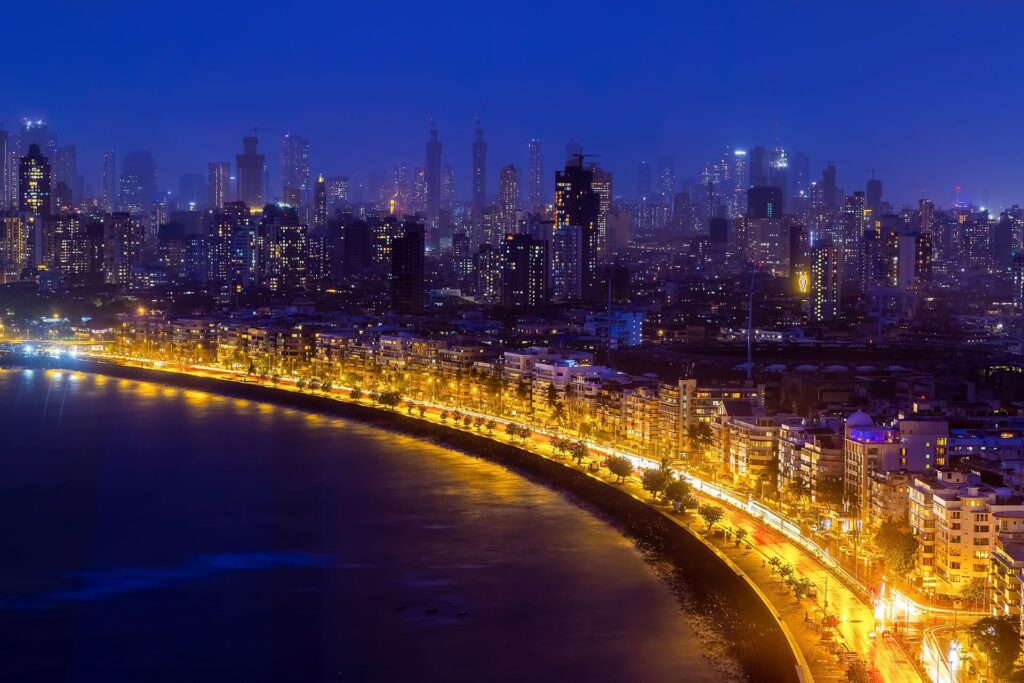
Known as the Queen’s Necklace, Marine Drive is a scenic promenade that stretches along the coastline. A stroll here, especially at sunset, offers breathtaking views and a chance to experience the local atmosphere.
Its extra wide, clutter-free sidewalk offers amongst the best street running routes that India has to avid runners. It is also a permanent part of the annual Mumbai Marathon and the best free places in Mumbai to get a total feel of the city.
13: Relax at Chowpatty Beach
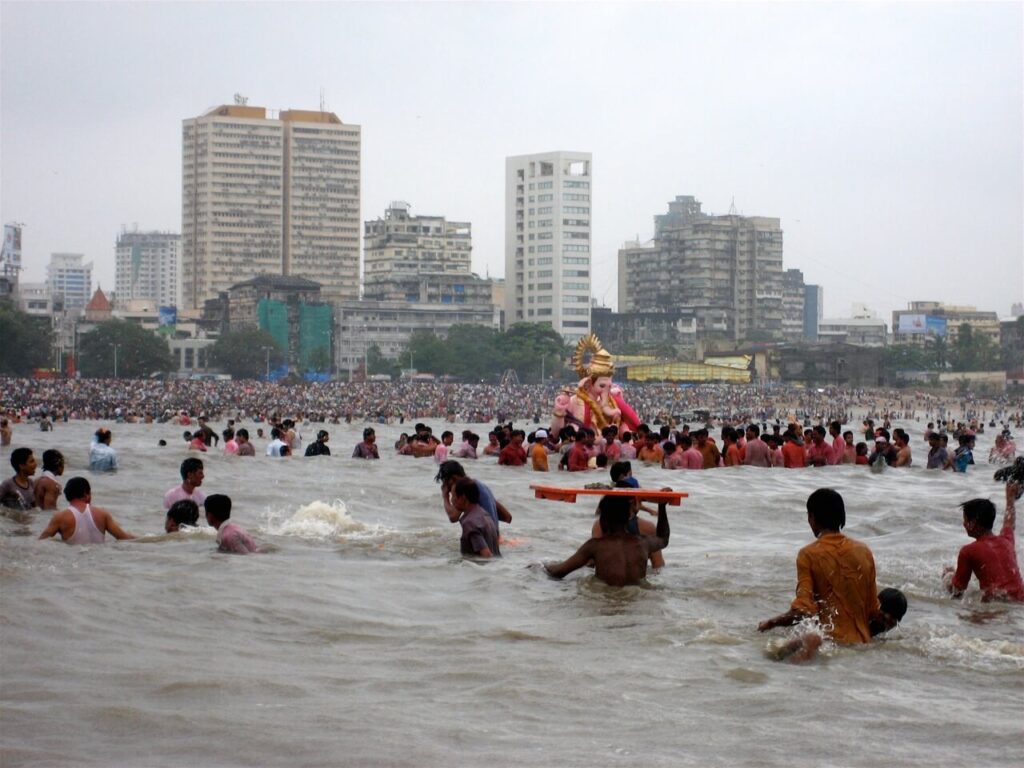
Girgaon Chowpatty, located along Mumbai’s iconic Marine Drive, is a popular beach known for its cultural and historical significance. Once a small fishing village, it evolved during the British colonial era into a prominent recreational area. The beach hosts major festivals, including Ganesh Chaturthi idol immersions, attracting thousands of visitors annually. It also offers a viewing deck for panoramic views of the Arabian Sea and Mumbai’s skyline. Open throughout the day, it is particularly lively during the evenings, with street food stalls and families enjoying the vibrant atmosphere. Girgaon Chowpatty is an essential tourist spot and amongst the top free places in Mumbai
14: Visit Banganga Tank
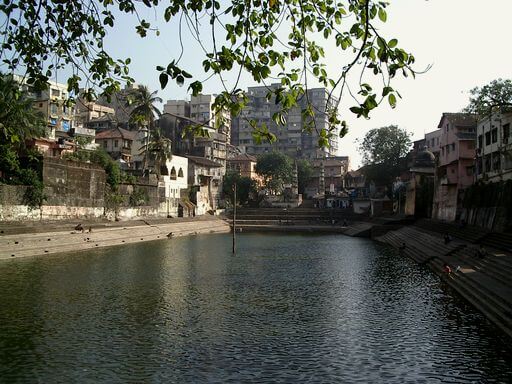
The Banganga Tank is an ancient water reservoir located in the Malabar Hill area of Mumbai, within the Walkeshwar Temple complex. Its historical significance lies in its association with the Hindu epic Ramayana. It is believed to have been created by Lord Rama to quench his thirst during his exile. Banaganga is made of two words, Bana (arrow) and Ganga (The Holy River Ganga).
The tank is a serene spot amidst the bustling city, offering visitors a peaceful atmosphere to explore the temple and nearby surroundings. It is free to visit & opens daily from early morning to evening, it’s a must-see for history and culture enthusiasts.
Location: In the Walkeshwar Temple Complex in Malabar Hill
Timing: It is open 24/7 but the ideal time to visit is between 6 AM and 8 PM
15: Visit The Hanging Gardens of Mumbai
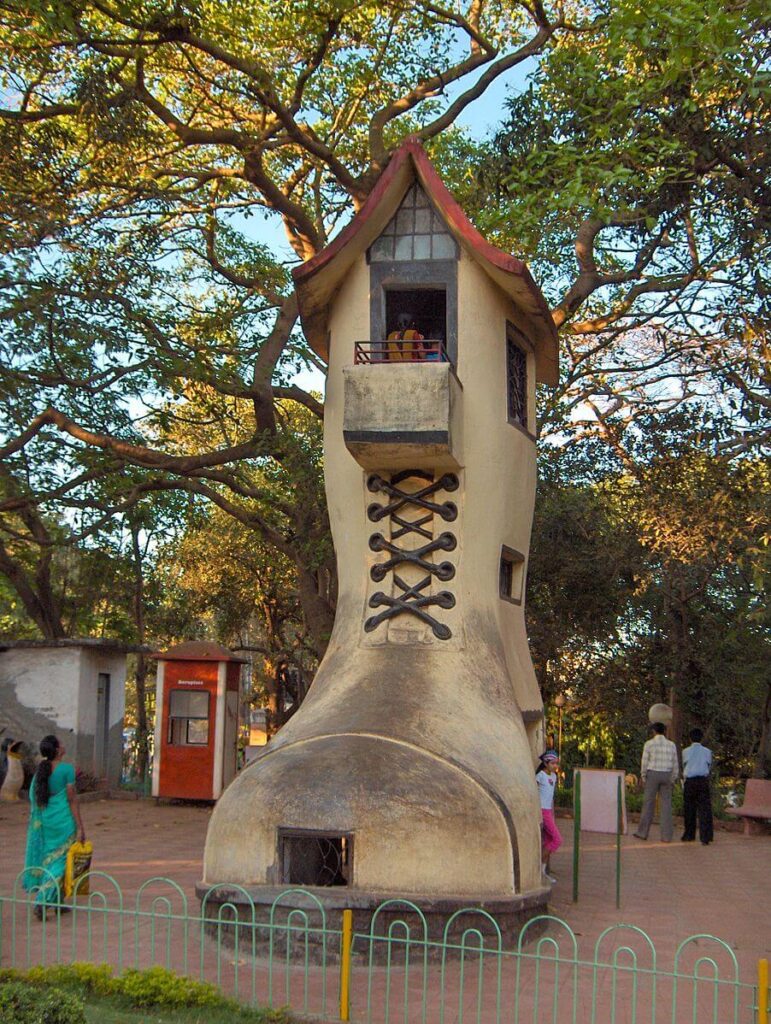
Located atop Malabar Hill, The Hanging Gardens offer a serene escape with spectacular views of the Arabian Sea. Built in the late 19th century by a wealthy Persian merchant, the garden is a marvel of landscaping, featuring lush green terraces and vibrant flowerbeds. It’s also historically significant as part of Mumbai’s early urban planning. The gardens are designed to cover a reservoir, which helps prevent water contamination. Visitors can explore the well-maintained walkways, relax, or witness stunning sunsets providing an ideal retreat for locals and tourists alike.
Location: Malabar Hill
Opening Hours: Daily from 5:00 AM to 9:00 PM
16: View the Dhobi Ghat
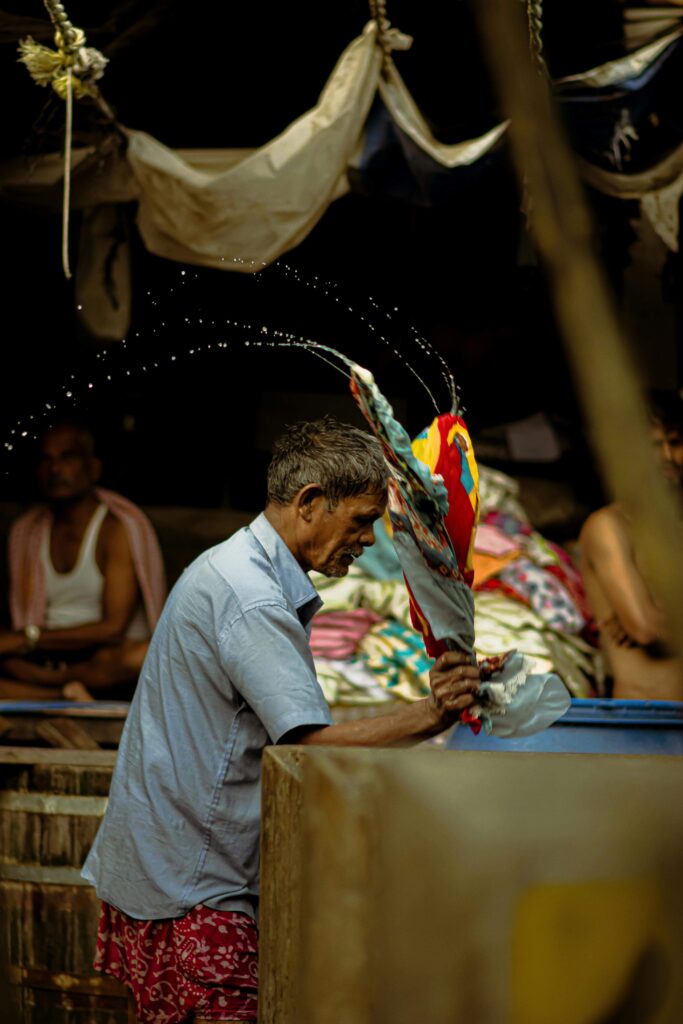
Mumbai’s Dhobi Ghat, located near Mahalaxmi Railway Station, is the world’s largest open-air laundry. Established in the 1890s, it initially catered to the laundry needs of the British and Parsi residents of Mumbai. Today, it continues to serve as a bustling hub for washing clothes, offering a unique glimpse into traditional laundry practices. The site has cultural and historical significance, representing Mumbai’s rich heritage and the persistence of age-old practices amid modern urban life.
For tourists, Dhobi Ghat is an interesting and vibrant spot that captures the essence of Mumbai’s everyday life and industrious spirit, though most households either wash their clothes at their homes or give to professional commercial laundries nowadays.
Location: Mahalaxmi, South Mumbai
Hours: Daily 24 hours but the best time is early morning between 7:30 to 9:00 AM
17: Go Birdwatching at the Sewri Fort
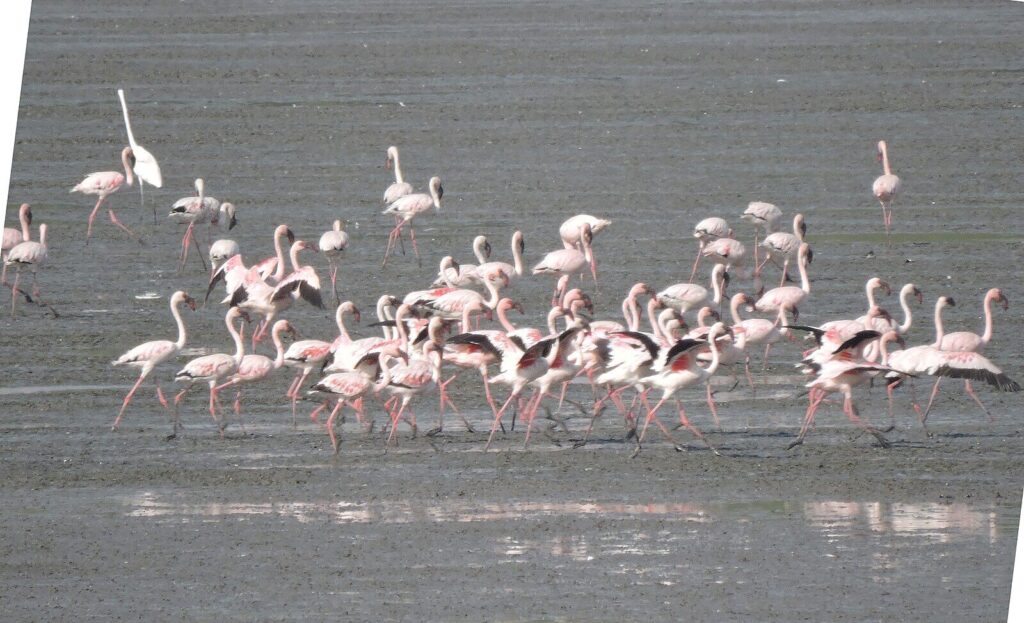
Sewri Fort, located near the docks is a historical site in Mumbai that offers an interesting experience for birdwatching enthusiasts. It is especially popular during the migratory season when thousands of flamingos and other migratory birds flock to the Sewri Jetty area. The fort itself, built in the 17th century by the British to guard the area, is a great spot for a stroll while observing these fascinating creatures.
The best time to visit for birdwatching is between November and February, during the cooler months when the birds are most active. The site is amongst the favorite free places in Mumbai that combines history, nature, and serenity for a memorable visit.
Location: Sewri
Opening Hours: Daily from 7:00 AM to 6:00 PM
18: Buy flowers from Dadar Flower Market
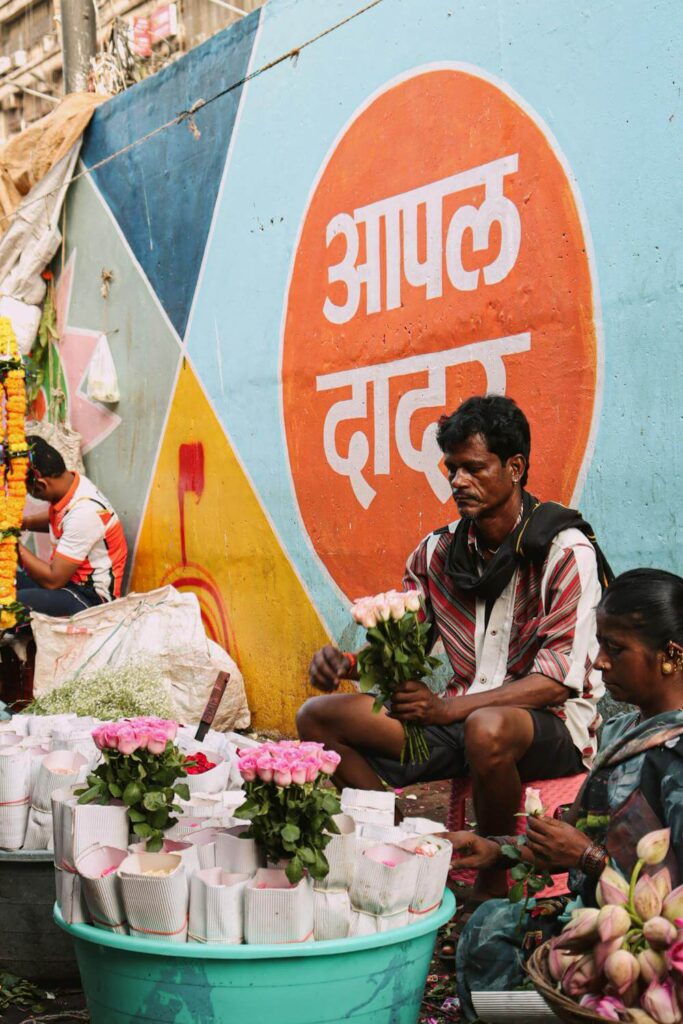
Dadar Flower Market is one of Mumbai’s most vibrant and historic markets, known for its colourful displays of flowers like marigolds, roses, and lotuses. The market has evolved over decades, becoming a key spot for the wholesale flower trade, catering to religious ceremonies, festivals, and weddings. It operates from early morning, starting around 4 AM and closing by 10 AM, offering a bustling atmosphere with locals and tourists alike. Visitors can explore the lively environment, shop for fresh flowers, capture beautiful photos, and immerse themselves in the local culture and commerce of Mumbai’s flower scene. It’s an excellent spot for photography and experiencing local life.
19: Prey at The Siddhivinayak Temple
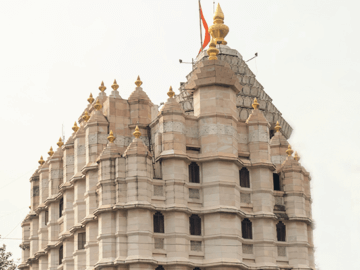
The Siddhivinayak Temple is one of the most revered Hindu temples dedicated to Lord Ganesha. Built-in 1801, the temple is known for its beautiful architecture and the idol of Ganesha, which is said to fulfil the wishes of its devotees. Entry is free, but there are VIP tickets available for faster darshan. The temple holds great significance in the lives of millions, symbolizing hope and prosperity, and attracting both locals and tourists alike.
Location: Prabhadevi
Timing: Daily from 0530 to 2200 with special hours during festivals and special days
20: Explore Dharavi Slums (Guided Tours Often Free)
The Dharavi Slum Tour became immensely popular after the movie, Slumdog Millionnaire. It offers visitors a unique and eye-opening experience, showcasing the lives of over a million residents packed into a single square mile in Mumbai. The tour provides insights into the community’s resilience and resourcefulness, highlighting thriving industries like pottery, textiles, and recycling. It is an educational journey into a part of Mumbai that is often misunderstood, emphasizing the innovative ways people live and work. While typically free, some tours may ask for donations. These tours usually take place in the morning or afternoon, lasting around two to three hours, with no set ticket price.
Dharavi Slum Tours in Mumbai have attracted criticism for various reasons. One major concern is the ethical implications of “poverty tourism.” Critics argue that these tours often exploit the residents of Dharavi, treating their daily struggles as a spectacle for tourists. The tours can be perceived as voyeuristic, reducing the lives of residents to a form of entertainment for those looking for an authentic “poor” experience. Some also view these tours as promoting stereotypes about slum life, reinforcing negative and simplistic perceptions. Furthermore, the commercial aspect of such tours raises questions about the benefit to the community, with many alleging that the proceeds do not significantly support residents or improve their living conditions.
While some tour operators focus on educating tourists and supporting local businesses, these tours remain controversial and should be approached with sensitivity and awareness of their impact on the community.
21: Explore Bandra, the queen of suburbs
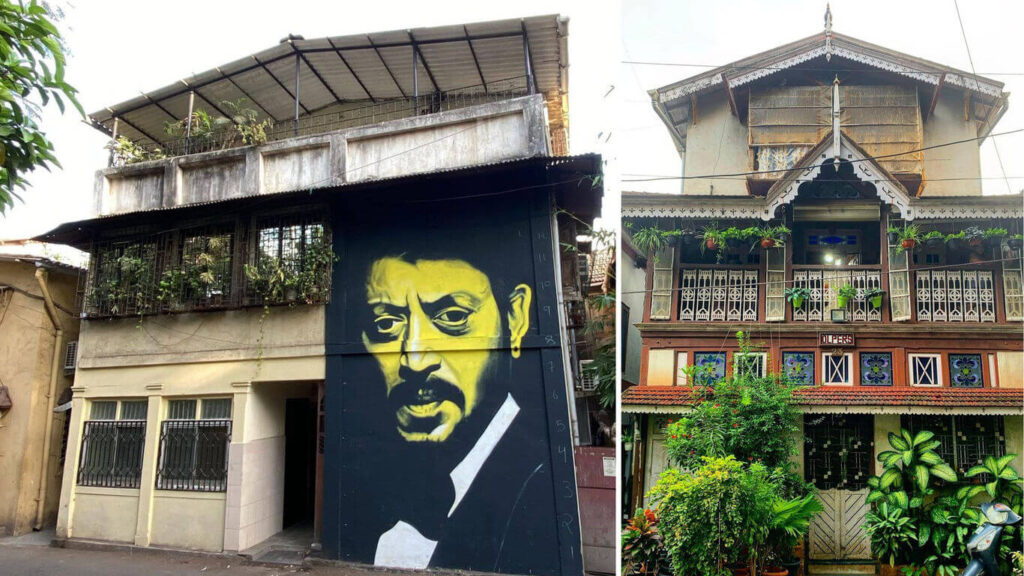
Bandra Bylanes are a charming maze of narrow streets that encapsulate the essence of Mumbai’s eclectic culture and history. Located in the vibrant Bandra neighbourhood, these lanes have evolved from a colonial settlement to a trendy hub, blending old-world charm with modernity without losing its village charm. As you wander through the bylanes which are totally free places in Mumbai to viisit, you’ll encounter heritage buildings, art galleries, quaint cafes, and boutique shops. Activities include exploring the street art, sampling local delicacies, and visiting landmarks like the Bandra Fort. These bylanes offer a unique glimpse into the fusion of Mumbai’s historical evolution and contemporary lifestyle.
22: Bandra Fort
Also known as the Castella de Aguada, is a historical landmark in Mumbai, built by the Portuguese in 1640 to protect their coastal territories. Over time, it played a key role in the region’s maritime defence and was later used by the British. Today, it is a popular tourist destination, offering panoramic views of the Arabian Sea and the Bandra-Worli Sea Link. Visitors can explore its remains, enjoy the scenic beauty, and take part in photography. The fort is accessible year-round, with no formal entry fees or timings, making it a great spot for casual visits.
23: Bandra Bandstand
It is a popular seaside promenade, renowned for its scenic views of the Arabian Sea and the Bandra-Worli Sea Link. Historically, it has evolved from a local promenade into a hub for tourists and locals alike, with its proximity to landmarks like the Bandra Fort and the residences of Bollywood celebrities. Visitors can stroll along the walkway, enjoy street food, or relax by the sea. It’s accessible at all times, with no entry fees, making it an ideal spot for a peaceful day out. The promenade also hosts occasional live performances and events.
24: Carter Road
Located in Bandra, Mumbai, it is a vibrant seaside promenade known for its scenic views of the Arabian Sea. Historically, it was developed into a public space in the early 2000s and has since become a hub for locals and tourists alike. The road offers various activities, such as jogging, cycling, and enjoying street food from popular vendors. Visitors can also explore nearby cafes and shops. It hosts cultural events and gatherings, making it a lively place throughout the day and evening. Carter Road is ideal for those seeking a relaxing yet energetic atmosphere in Mumbai.
25: Open-Air Theater at Prithvi Theatre
Prithvi Theatre, located in Juhu, Mumbai, is a renowned cultural landmark, founded in 1978 by Shashi Kapoor in memory of his father, Prithviraj Kapoor. The open-air theatre is famous for hosting diverse and intimate performances, contributing to Mumbai’s thriving theatre scene. Over the years, it has become a popular hub for theatre lovers and artists. The theatre features an open-air cafe, creating a relaxed ambience. It operates daily with performances typically held in the evening, and ticket prices vary depending on the show. You can spend time enjoying the Mumbai Theatre scene and watching new and established actors hanging out in the cafe.
Location: Juhu
26: Meditate at Global Vipassana Pagoda
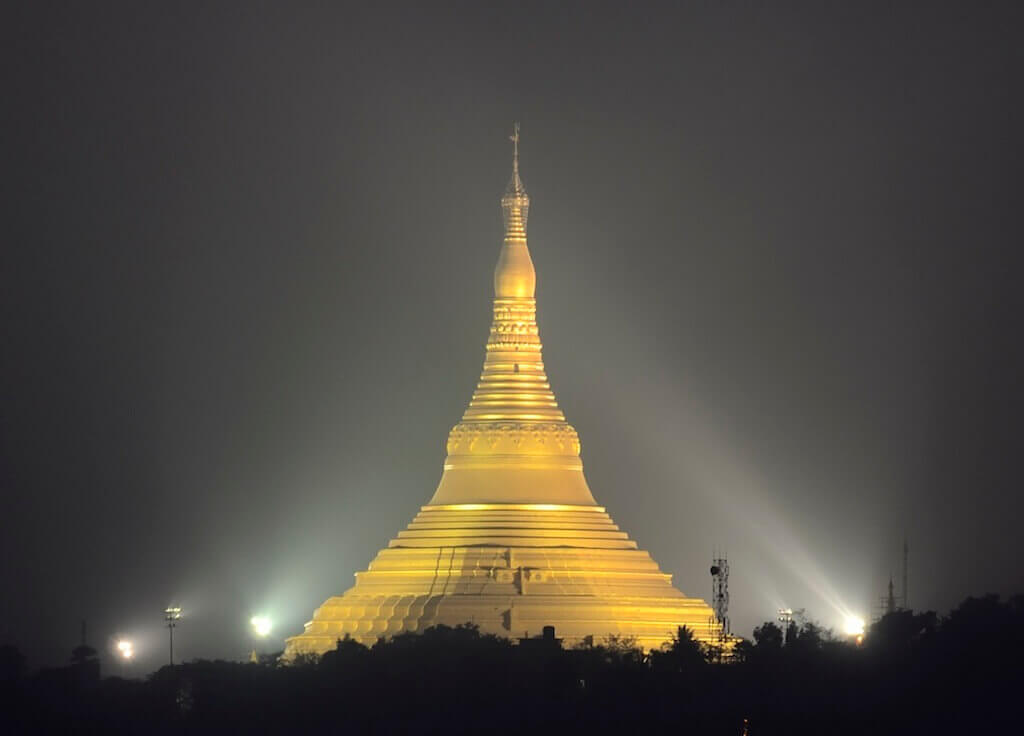
The Global Vipassana Pagoda, located in Gorai, Mumbai, is a massive meditation centre and one of the largest domes in the world. Completed in 2008, it is a symbol of peace and harmony, built to honour the teachings of Sayagyi U Ba Khin. The pagoda’s primary purpose is to promote the practice of Vipassana meditation. Visitors can explore the dome, participate in meditation sessions, and enjoy its tranquil surroundings.
The Global Vipassana Pagoda, located in Gorai, Mumbai, is a massive meditation centre and one of the largest domes in the world. Completed in 2008, it is a symbol of peace and harmony, built to honour the teachings of Sayagyi U Ba Khin. The pagoda’s primary purpose is to promote the practice of Vipassana meditation. Visitors can explore the dome, participate in meditation sessions, and enjoy its tranquil surroundings.
Click the link to know more about the Golden Pagoda and Vipassana.
Location: Gorai Beach, accessible by road and ferry
Opening Hours: Daily from 9:00 AM to 6:00 PM with free entry, though donations are encouraged.
27: Take Part in Local Festivals
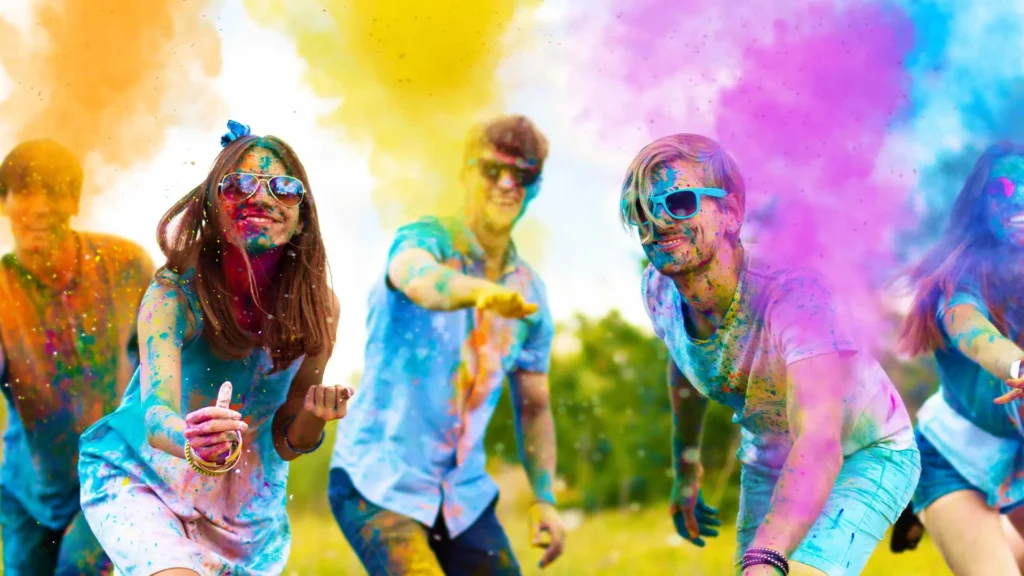
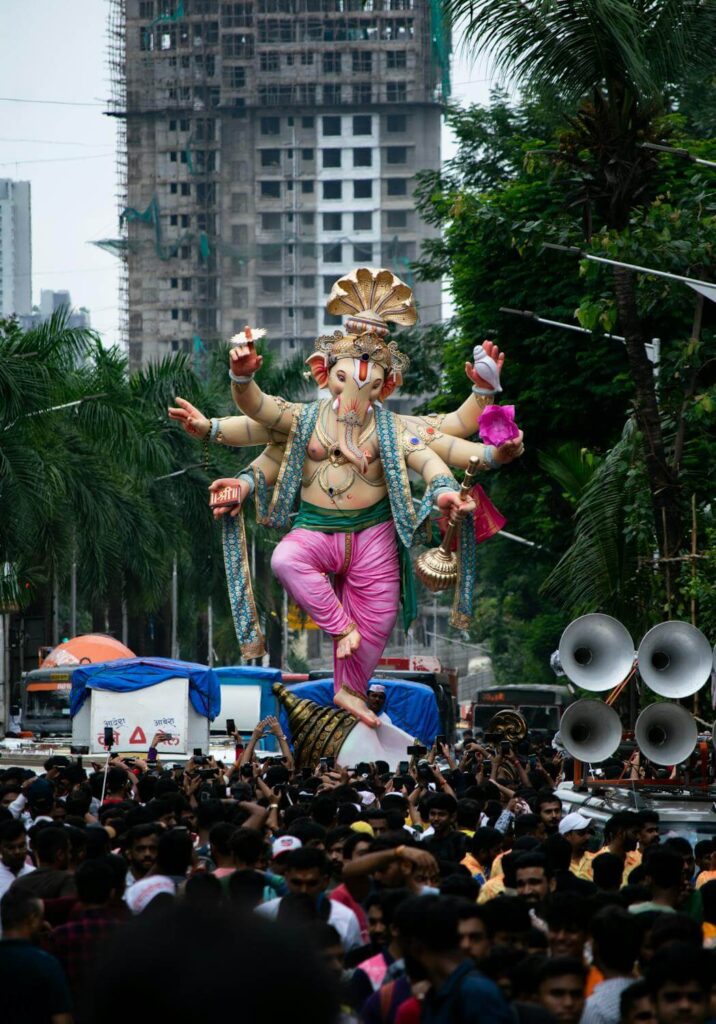
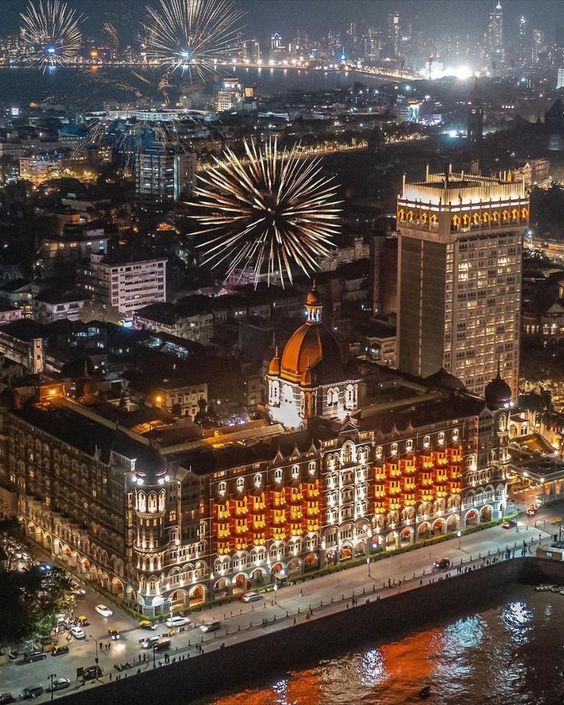
Experiencing local festivals such as Ganesh Chaturthi or Diwali can be done without any cost by participating in public celebrations throughout the city. There are various free places in Mumbai where events are held for public during major festivals
28: Attend Free Workshops or Talks
Many cultural centres in Mumbai host free workshops or talks on various subjects ranging from art to literature; checking local listings can provide opportunities for learning without cost.
29: Witness Local Sports Events
Local cricket matches can often be watched for free at various grounds throughout the city; this is an excellent way to engage with locals and experience India’s passion for cricket firsthand.
30: Participate in Yoga Sessions at Parks
Some parks offer free yoga sessions early in the morning; joining these classes not only promotes health but also provides an opportunity to meet locals.
31: Visit Local Temples
Mumbai is home to numerous temples that welcome visitors without any entry fees; places like Siddhivinayak Temple are not only spiritual sites but also architectural marvels worth visiting.
32: Beaches of Mumbai
Mumbai has 5 beaches that you can visit. Girgaon Chowpatty, Juhu Beach, Versova Beach, Aksa Beach & Marve Beach. Each of these beaches are free to access and has a distinct character.
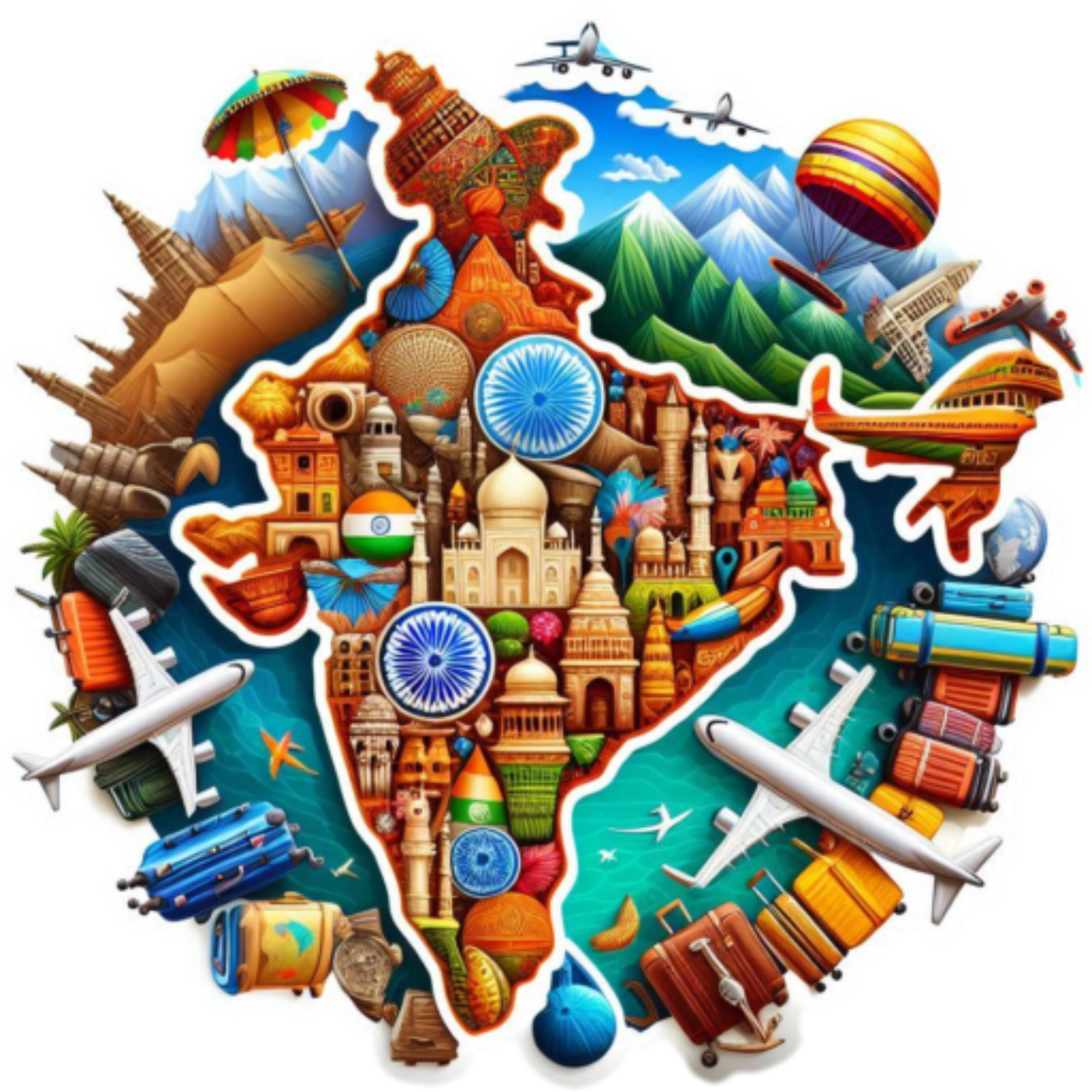
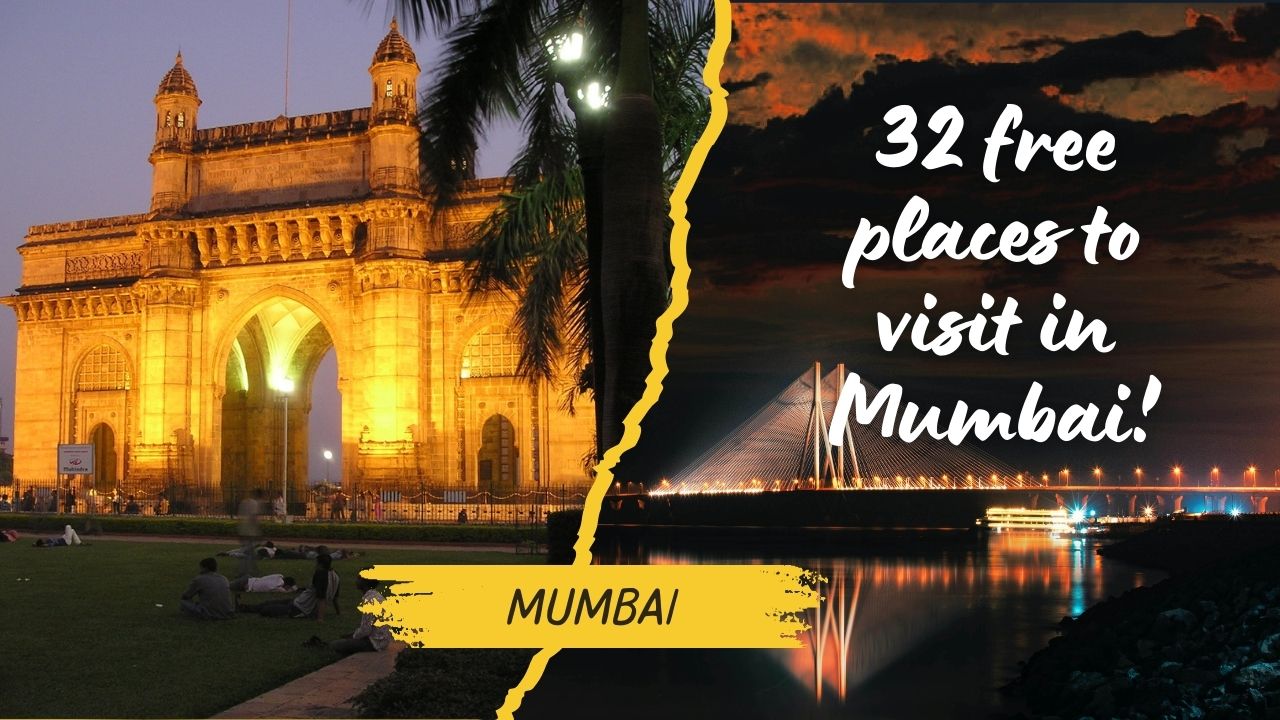



Pingback: I Love Mumbai: 8 reasons why you will fall in love with the city - Traveling to India?
Pingback: Everything You Need to Know about Chhatrapati Shivaji Maharaj Terminus: A Complete Guide for the Tourists - Traveling to India?